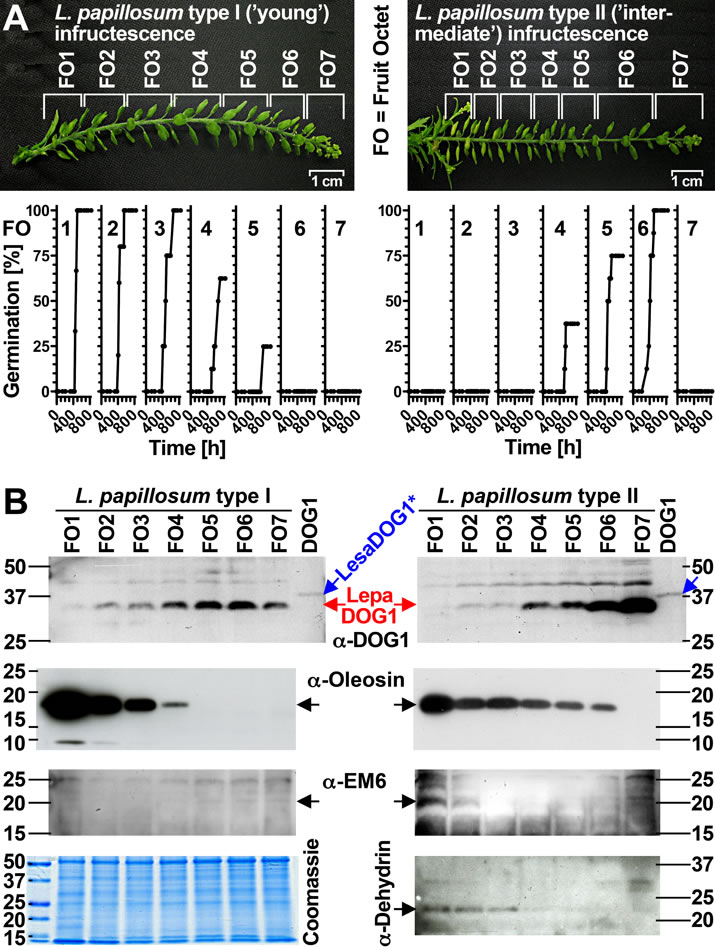Plant Physiology 161: 1903-1917 (2013)
Spatiotemporal seed development analysis provides insight into primary dormancy induction and evolution of the Lepidium DELAY OF GERMINATION1 Genes [W][OA]
School of Biological Sciences, Plant Molecular Science and Centre for Systems and Synthetic Biology, Royal Holloway, University of London, Egham, Surrey TW20 0EX, United Kingdom (KG, AV, GLM);
Web: 'The Seed Biology Place' - www.seedbiology.eu
University of Freiburg, Faculty of Biology, Institute for Biology II, Botany/Plant Physiology, D-79104 Freiburg, Germany (KG, AV, ABM, GLM)
Universität Osnabrück, Fachbereich Biologie, Botanik, D-49069 Osnabrück, Germany (KS, KM)
Received December 24, 2012; Accepted Feburary 19, 2013; Published Feburary 20, 2013.
DOI:10.1104/pp.112.213298

Figure 7. Spatial analysis of LepaDOG1 protein expression within the Lepidium papillosum infructescence.
A, Type I (left) and II (right) L. papillosum infructescences, their experimental dissection into fruit octets (FO, each containing 8 fruits and thereby 16 seeds), and their FO-specific germination time courses. Note that non-germinating seeds from top-FOs are immature, while non-germinating seeds from bottom-FOs are dormant.
B, FO-specific immunoblot analysis of type I (left) and II (right) infructescences shown in A displaying the protein expression patterns for LepaDOG1, oleosin (expressed during early maturation, indicative for seed filling), EM6 and dehydrin (expressed during late maturation, indicative for seed maturation and desiccation tolerance) by using corresponding antibodies (α-DOG12, α-oleosin, α-EM6, α-dehydrin); Coomassie-stained gel showing the FO protein extract banding patterns (bottom left). kD, protein molecular mass marker ladder.
| Article in PDF format (2 MB) Supplementary data file (4.9 MB) |
|
|
|
The Seed Biology Place |
Webdesign Gerhard Leubner 2000 |